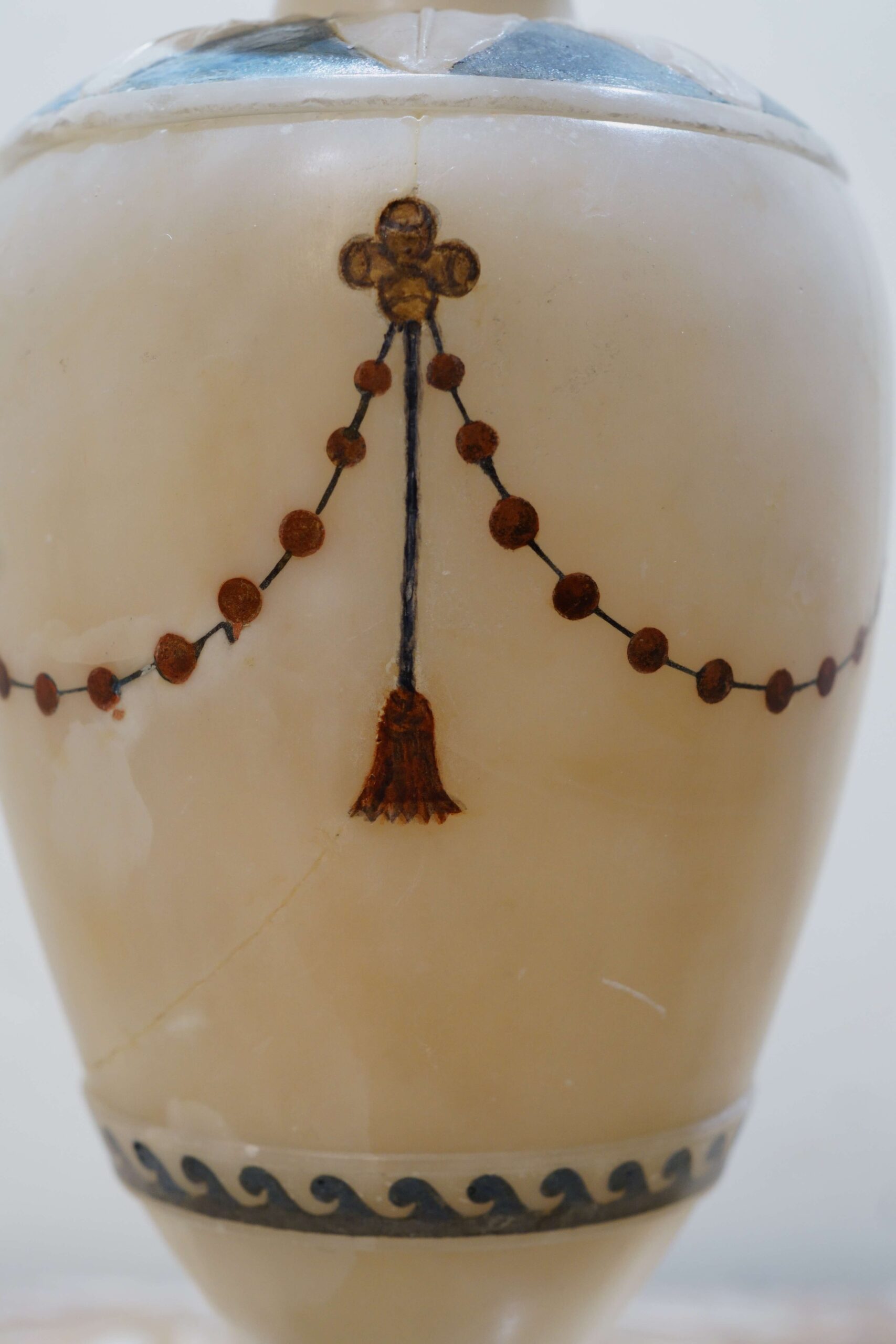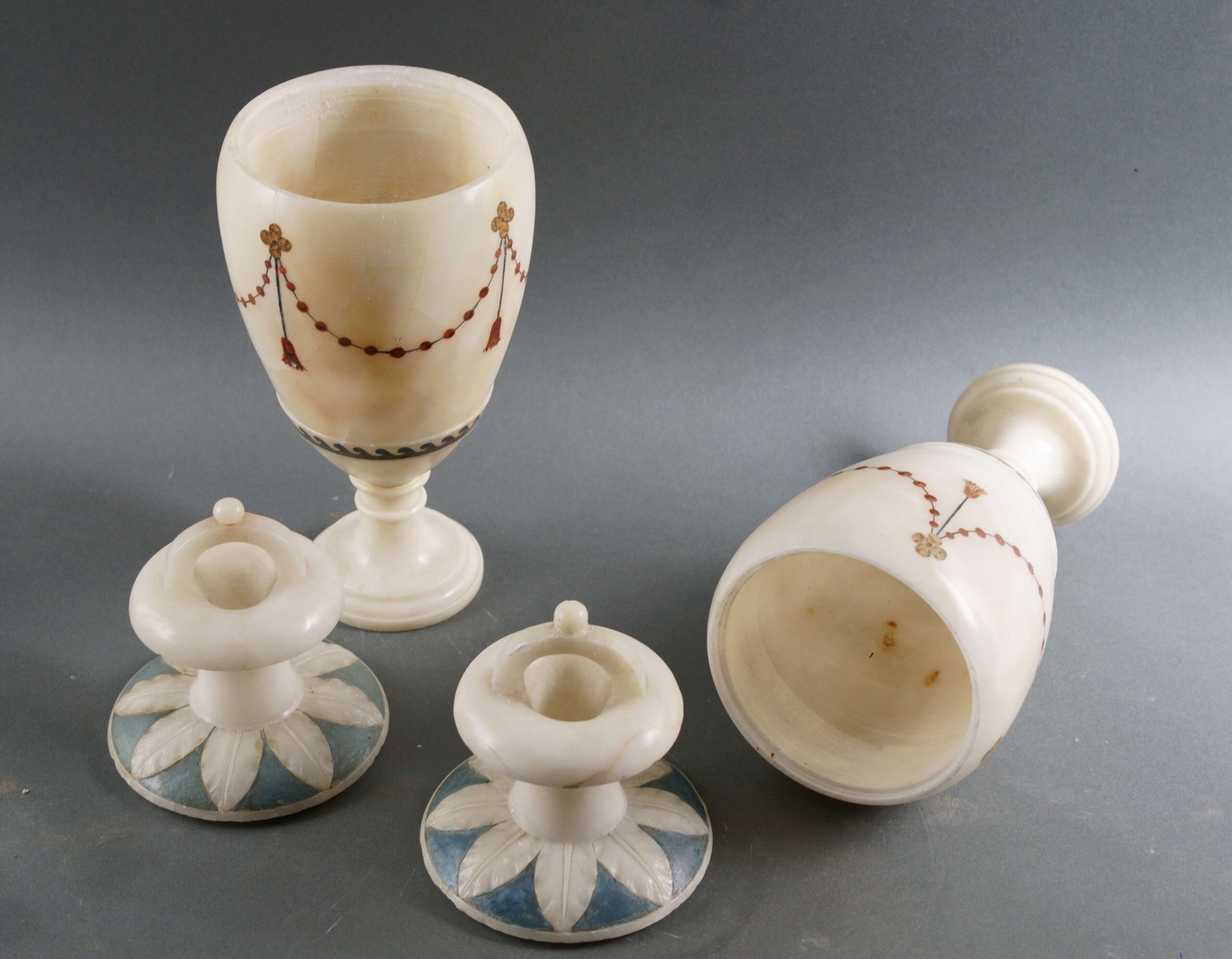Pair of neoclassical urns in alabaster and polychrome scagliola, Florentine workshop, last quarter of the 18th century. Provenance: Dukes of Fitz-James and heirs.
This rare pair of neoclassical urns comes to us from a prestigious inheritance, that of the Parisian branch of the Dukes of Fitz-James. The title of Duke of Fitz-James appears for the first time in France under Louis XIV, created by the king himself in 1710 for James FitzJames, 1st Duke of Berwick, an illegitimate son of James II of England. James II of England had awarded his son, by his lover Arabella Churchill, the title of Duke of Berwick among the English nobility. After the Glorious Revolution of 1688, which dethroned James II, Berwick entered the service of Louis XIV who appointed him Marshal of France in 1703. His eldest son is the creator of the Spanish branch of the Dukes of Berwick, which under the name of Fitz-James Stuart, today unites several Spanish grandees, including that of the Duke of Alba. His youngest son is the creator of the French branch of the Dukes of Fitz-James, which distinguished itself for seven generations, until its extinction in the mid-20th century.
The Parisian heritage of the Fitz-James counted on an impressive collection dating mainly between the end of the 18th and the beginning of the 19th century of art objects, miniatures, “souvenirs”, portraits and historical memories. In particular our vases were jealously guarded in the library.
Almost certainly this pair of urns was commissioned for the Fitz-James family, as there are no other comparable examples, and they were almost certainly made by a Florentine workshop during the Grand Tour: between the end of the 18th and the beginning of the 19th century, Rome and Florence were the main production centers of fine artefacts that hark back to ancient times, but the use of materials such as Volterra alabaster and scagliola, as well as the shape of the vases, which takes inspiration from Etruscan models, leave no doubt about it.
Volterra alabaster, the most valuable in Europe, with its delicate and opalescent color, almost transparent to the light, was masterfully decorated with the scagliola technique, engraving its surface and then filling it with stucco and decorating it in polychrome to imitate hard stone. Art objects like these are extremely rare, and to engrave the curved and thin surface of the vase without breaking it, great workshop masters were needed.
The result, which we can still admire today, are two beautiful urns with soft colors, magnificently preserved. The passage of time has, it is true, left its signs: there are some cracks due to tensions on the material and points where it was necessary to intervene by gluing parts that had come loose, but these are long-standing interventions that did not require reconstruction or repainting and that are especially noticeable by exposing the vases to light, as alabaster is translucent. We are faced with two practically unique pieces that have reached us after more than two centuries of history, and we must know how to appreciate them as they are, without trying to hide the wounds.
Measure
H cm 38
W cm 15
D cm 15




















